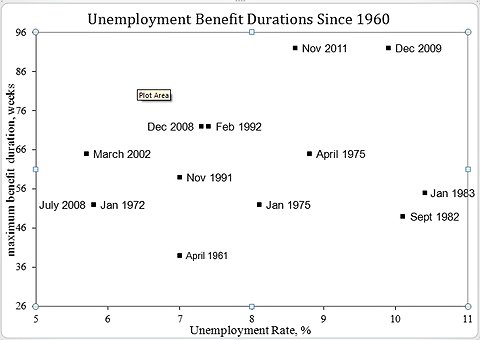The number of Americans seeking unemployment benefits dropped 12,000 last week to a seasonally adjusted 334,000, a decline that suggests steady job gains will endure.
The less volatile four-week average decreased 7,250 to 345,250, the Labor Department said on Thursday. Both figures are roughly 7,000 higher than a month ago, which were the lowest in five years.
Applications, a proxy for layoffs, have fallen 6.5 percent since January, suggesting that employers were cutting fewer jobs.
At the same time, hiring has been steady. Employers added 175,000 jobs in May, the department said last week. That nearly matched the monthly average for the previous year. The unemployment rate rose to 7.6 percent because more Americans were confident they could find work and began searching for a job.
Separately, the Commerce Department said that retail sales increased 0.6 percent last month, showing that consumers remained resilient despite higher taxes and could drive faster growth later this year.
“The retail sales result is a plus, no question,” said Jennifer Lee, an economist at BMO Capital Markets. “And the improving trend in jobless claims is supportive for future spending.”
About 4.5 million people received unemployment benefits in the week that ended May 25, the latest data available. That is 130,000 fewer than the previous week. The number of people receiving benefits fell 29 percent in the last year. Some of those recipients probably found jobs, but many probably used all the benefits available to them.
The economy grew at a solid annual rate of 2.4 percent in the first three months of the year. Consumer spending rose at the fastest pace in more than two years.
The Commerce Department also reported that businesses increased their stockpiles in April but their sales fell for a second straight month, constrained by a decline in orders to American factories.
Stockpiles rose 0.3 percent in April from March, after a decline of 0.1 percent in March from February.
Sales slipped 0.1 percent in April, after a sharp 1.2 percent drop in March. The figures represent the first back-to-back sales declines in nearly a year, although the weakness was concentrated in manufacturing.
More restocking bolsters economic growth because it means companies are ordering more manufactured goods. In April, retailers increased restocking 0.4 percent to lead all categories. Manufacturing and wholesale stockpiles grew 0.2 percent.

Article source: http://www.nytimes.com/2013/06/14/business/economy/employment-and-retail-sales-improved-in-may.html?partner=rss&emc=rss

